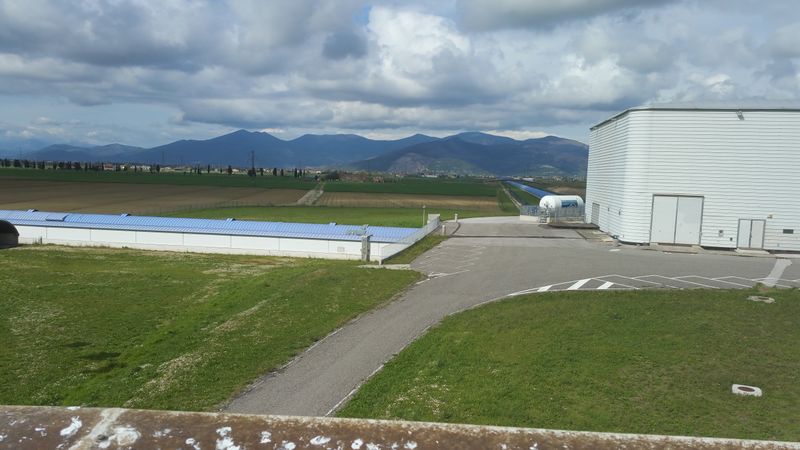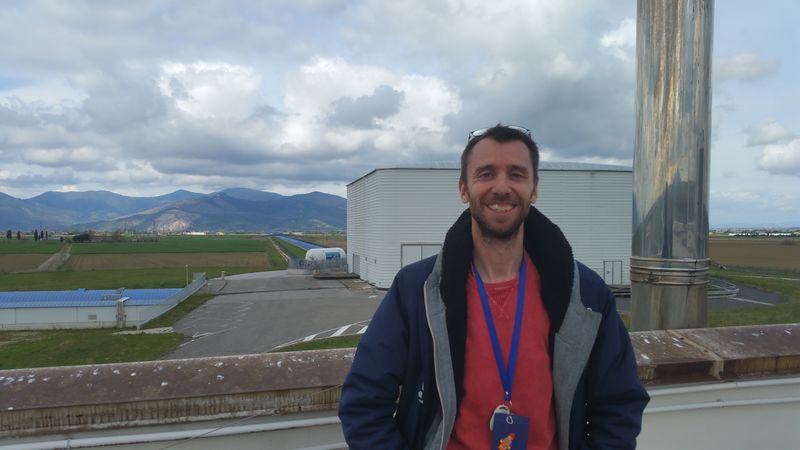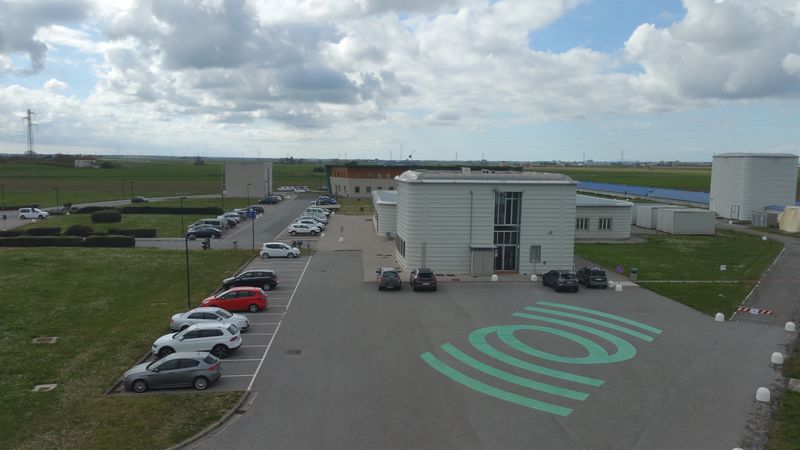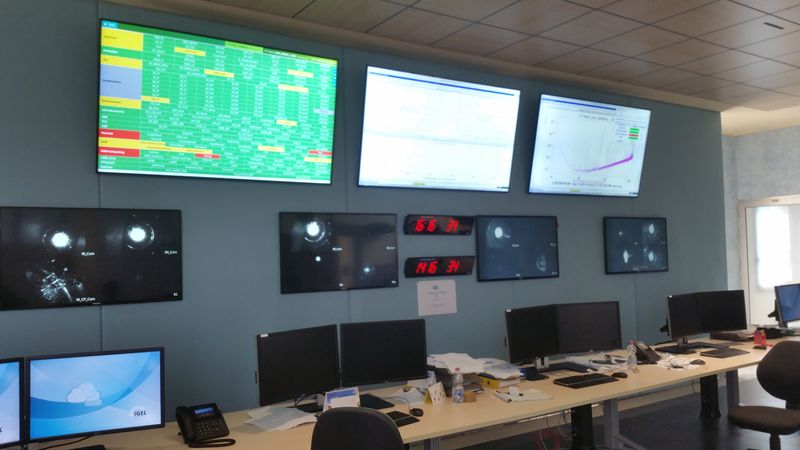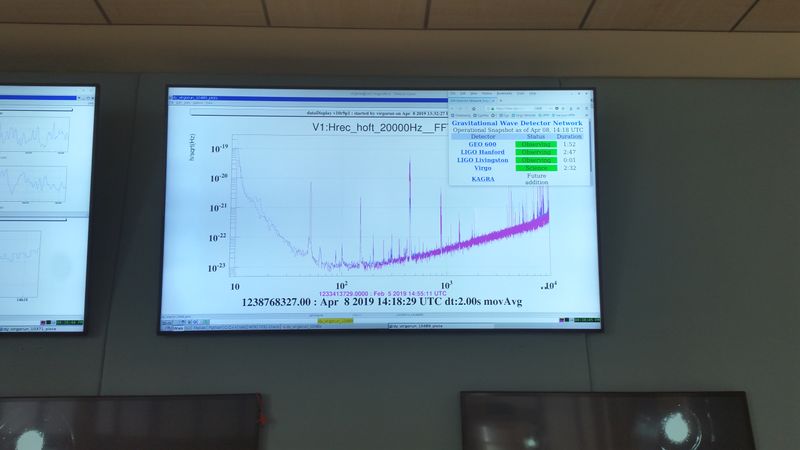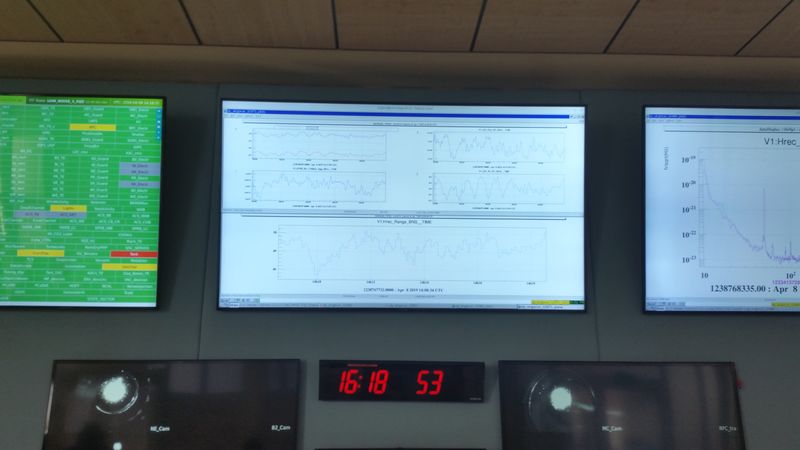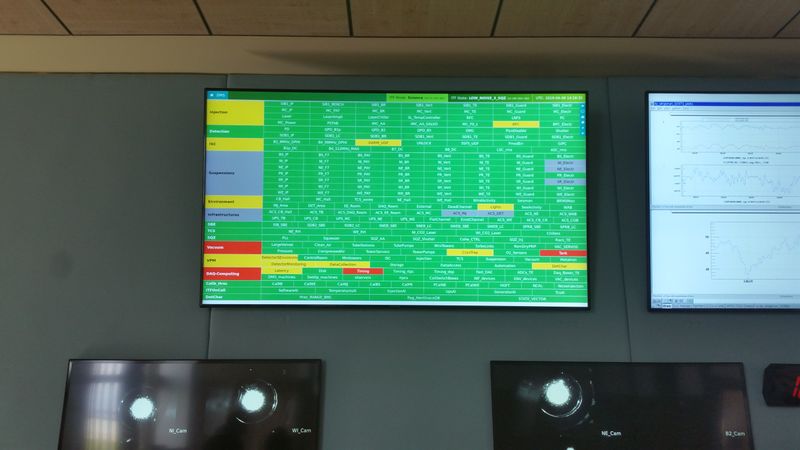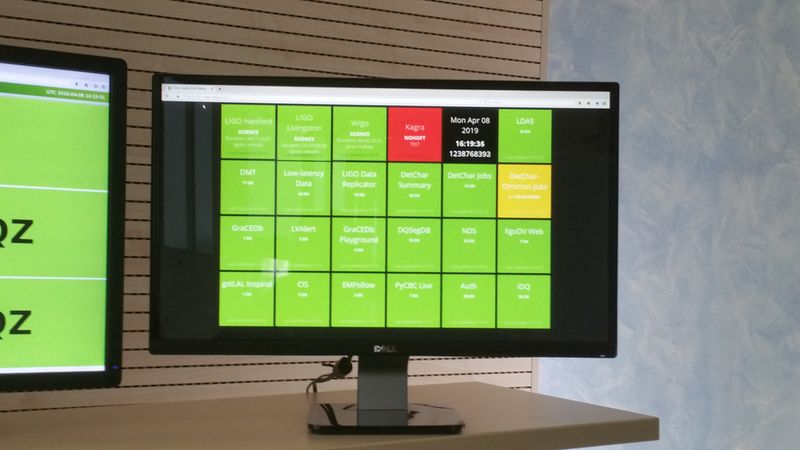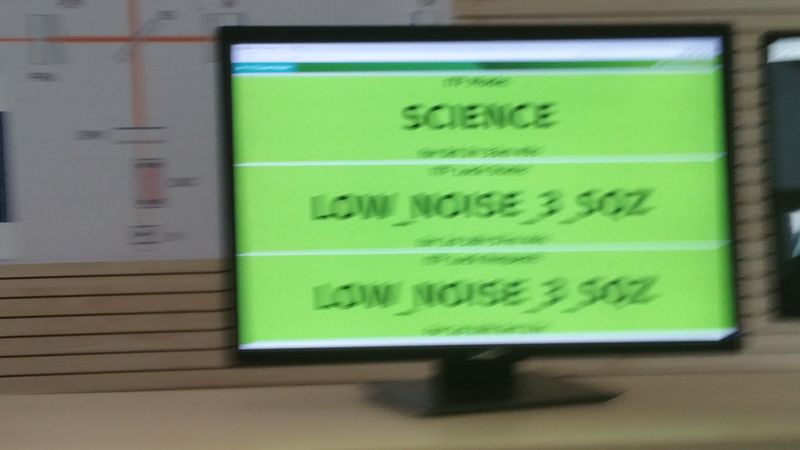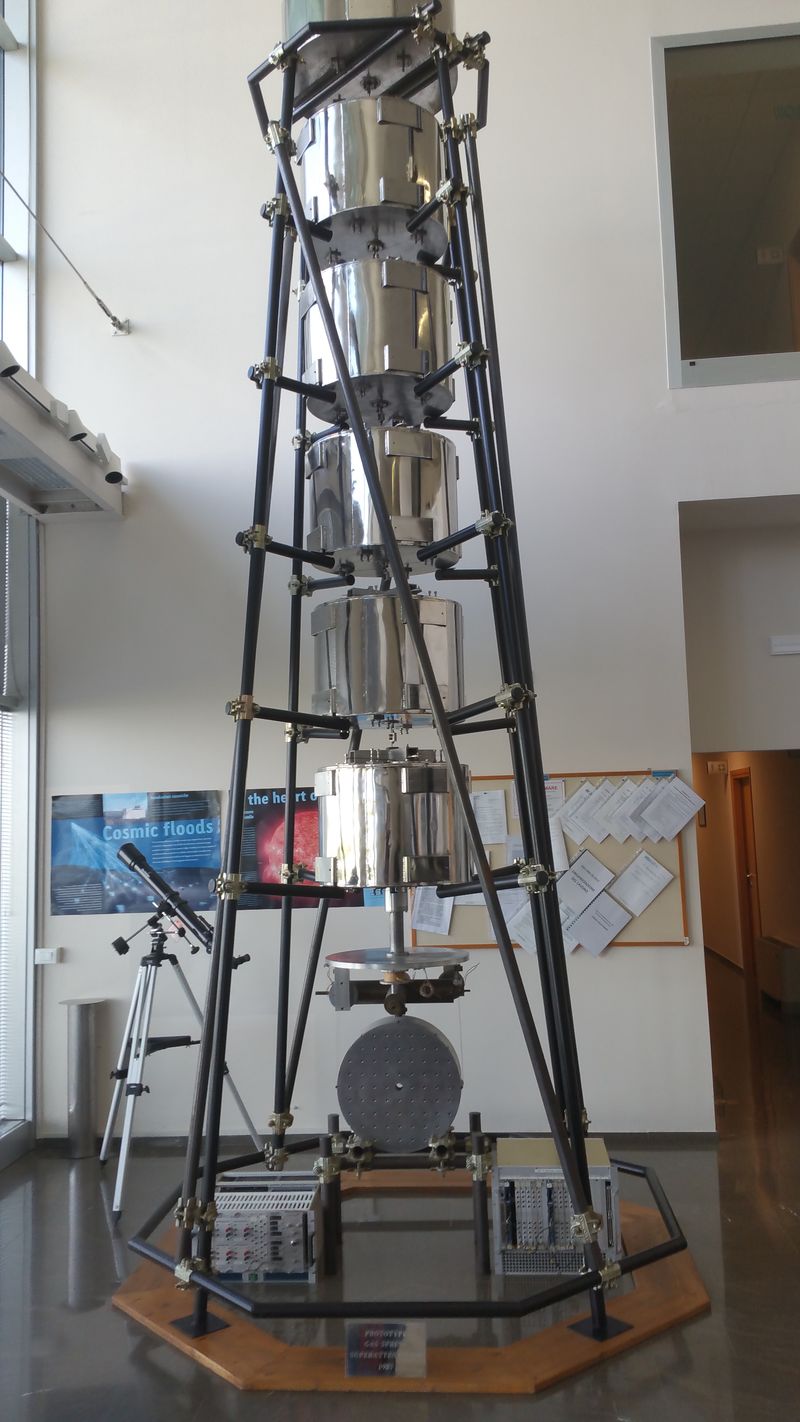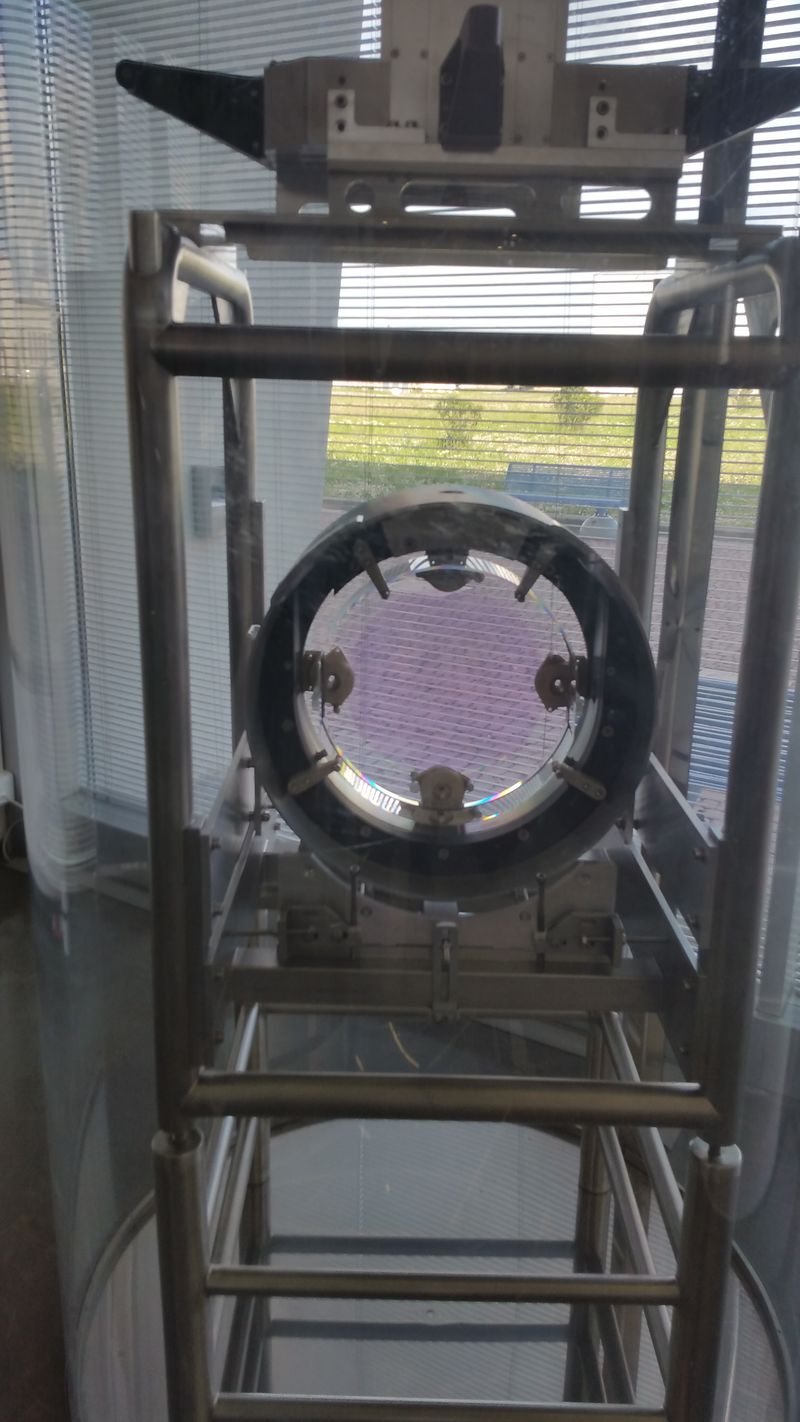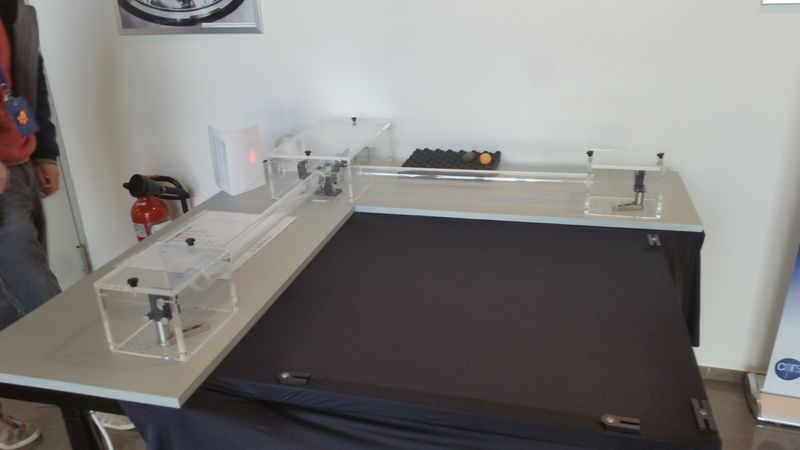Virgo
Links
- https://en.wikipedia.org/wiki/Virgo_interferometer
- http://www.virgo-gw.eu/
- https://www.advancedligo.mit.edu
Visit 2019-04-08
We were very happy to be able to Visit the EGO/VIRGO site given that one has to wait for many month to get an appointment.
Interferometer arms
The two arms are each 3 km long the laser beam is split and then passes each beam multiple times for a total of some 120 km of travel. Then the two beams meet again and in theory the waves should be perfectly "in sync" and black each other out. Only if some disturbance like a gravitational wave passing changes the distance travelled by the light then there will (hopefully) be a signal with a signal to noise ratio that will allow to talk analyze what might have caused the disturbance. In the past a few very interesting astronomical events have been detected this way. See e.g. GW150914
The Interferometer is very sensitive to moving masses. Any moving mass like seismic events, air planes passing, wind turbines near by, agricultaral machinery working in the vicinity, tidal effects, meterological events like thunderstorms, visitors in groups nearing the building might unlock the system.
To avoid most of this "noise" the laser building is grounded on the rock some 100 m below it and the laser and the mirrors are mounted in a way that tries to filter as much movement from the environment as possible. See attenuator setup below.
Our Guide Gary
Gary has shown us the site and explained how it works. He was a great guide.
Observation Building
The Observation Building houses the control room and the offices of the staff.
Control room
If all runs well the system will be in "science" mode and cooperate with the two american LIGO detectors Hanford/Livingston and the german GEO600 detector.
Signal observation
Device status
Original Attenuator design (1987)
Mirror held by silicon threads
Michelson Moreley Experiment
see https://en.wikipedia.org/wiki/Michelson%E2%80%93Morley_experiment
